This article has been reviewed according to Science X's editorial process and policies. Editors have highlighted the following attributes while ensuring the content's credibility:
fact-checked
peer-reviewed publication
reputable news agency
proofread
Researchers find higher levels of dangerous chemical than expected in southeast Louisiana
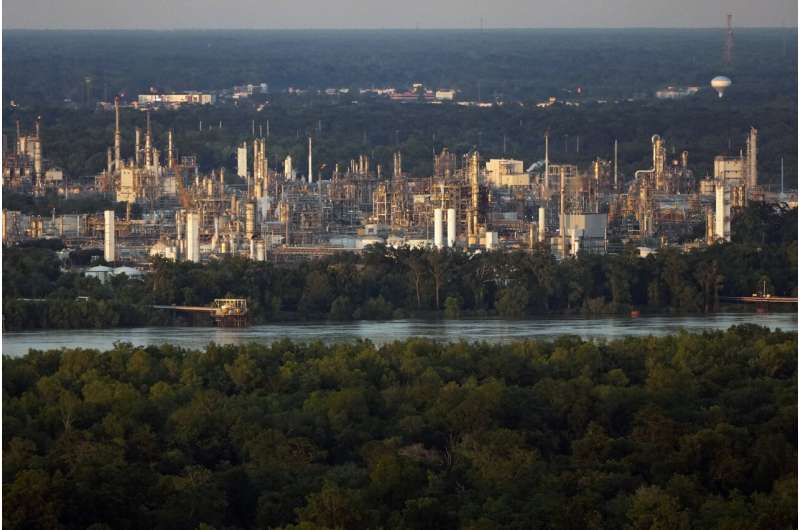
Researchers using high-tech air monitoring equipment rolled through an industrialized stretch of southeast Louisiana in mobile labs and found levels of a carcinogen in concentrations as much as 20 times higher than previously estimated, according to a paper published Tuesday in the journal Environmental Science & Technology.
The study by researchers at Johns Hopkins University raises new health concerns for communities that sit among the chemical plants lining a stretch of the Mississippi River between Baton Rouge and New Orleans—dubbed "cancer alley" by environmentalists.
The Environmental Protection Agency considers long-term exposure to inhaled ethylene oxide gas a cancer risk—a stance challenged by the chemical industry. The state of California, which has its own environmental health agency, also lists the chemical as "known to cause cancer and reproductive toxicity" in men and women.
The study also heralds newer technologies that enable better, more accurate measurements of ethylene oxide and other chemicals.
"The instrumentation technology that we have available to us is just much more sensitive and can be put on vans and driven around in ways that you don't get with regulatory instruments," said Pete DeCarlo, one of the researchers on the study.
Ethylene oxide is produced in large amounts and used to make a main ingredient in antifreeze and polyester. It's also used to sterilize food, cosmetics and medical equipment and as a pesticide.
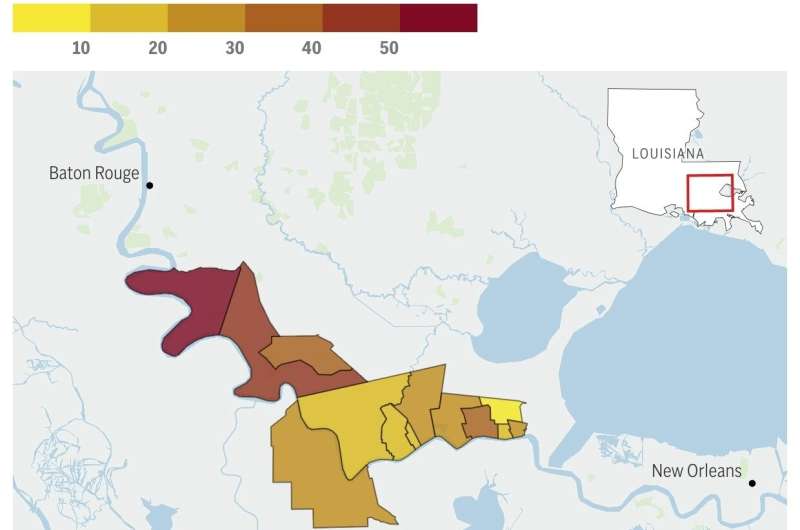
The report comes as the Biden administration has taken steps to lessen people's exposure to the gas. Earlier this year, EPA announced plans to limit the use of the chemical. And ethylene oxide also figures in a broad order issued in April requiring more than 200 plants nationwide to reduce toxic emissions.
The EPA noted those actions in a statement reacting to Tuesday's report and touting the efforts of the agency's administrator, Michael Regan.
"EPA looks forward to reviewing the study," the statement said. "Under the leadership of Administrator Regan, EPA has made important strides to protect the residents of Cancer Alley from dangerous toxic pollution including taking local enforcement action and finalizing national standards to reduce cancer risk in affected communities."
Traditionally, measurements of ethylene oxide have been made by gathering and storing air samples in stainless steel cannisters for later lab analyses. The problem, DeCarlo said, is that storage in the cannisters appears to alter the concentration of the gas.
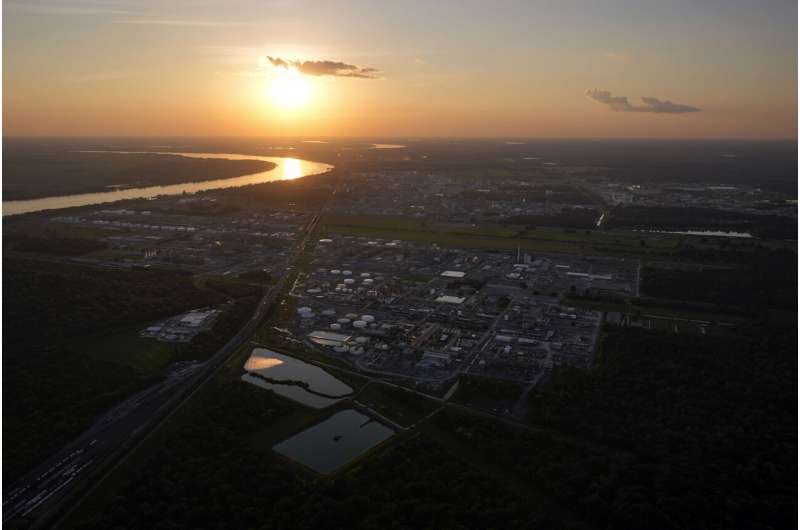
DeCarlo said that current regulatory figures on ethylene oxide levels are based on samples self-reported by the industry. Those numbers, he said, are "anywhere from two to 10 times lower than the values that we measured with our mobile laboratory in Louisiana." And, in some areas tested, the new results were up to 20 times higher than the regulatory figures.
The Johns Hopkins study involved two vans that drove the same routes repeatedly over the course of a month last year. Researchers used instruments that measure gases in real time as they flow through a high-intensity light. The vans used two different instruments, yet they measured similar results, bolstering researchers' confidence in the testing.
DeCarlo said nearly all the readings were higher than 11 parts of ethylene oxide per 1 trillion parts of air—a level that translates to a one in 10,000 cancer risk for long-term exposure to the gas. That's the upper threshold of what the EPA considers acceptable for many air toxics and carcinogens.
Sometimes levels were a thousand times higher—measured in parts per billion rather than per trillion. And, notes Keeve Nachman, another of the Johns Hopkins researchers, ethylene oxide is only one of the pollutants emitted in the area.
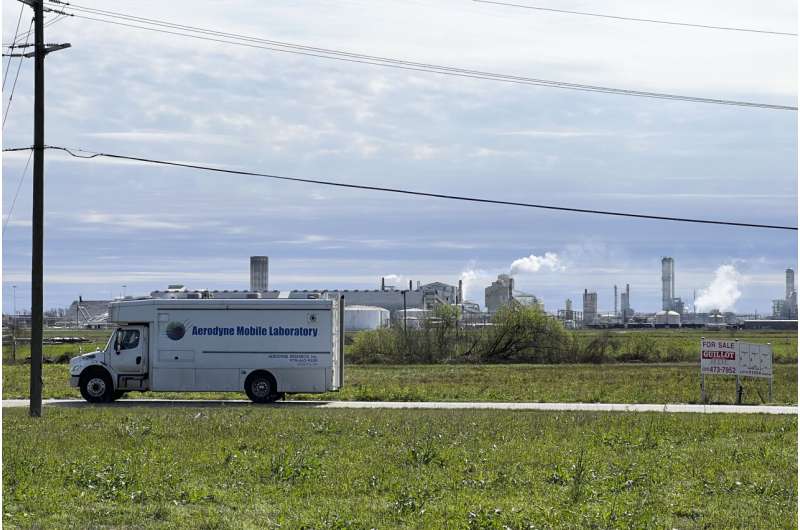
"When you think about all the other chemicals that are in play and all of the other concerns that we may have about people who live in Cancer Alley and the other life stressors they have to deal with, they may be less resilient to an exposure to ethylene oxide than someone in the general population," Nachman said. "So, you know, if if you were to say, what's the appropriate level or what should the acceptable risk be? It should probably be lower than 1 in 10,000 people out there."
Short-term exposure to the levels poses little risk to the vast majority of people, said Rustin Reed, a professor at Tulane University's School of Public Health, who was not involved in the study.
"My concern would be for at-risk individuals who are exposed over a lifetime, which is difficult to estimate, but should be a concern to investigate further," Reed said.
The American Chemistry Council, a trade organization, didn't offer comment on the Johns Hopkins research Tuesday but noted its past criticisms of the EPA's methods of assessing the risks of ethylene oxide.
-
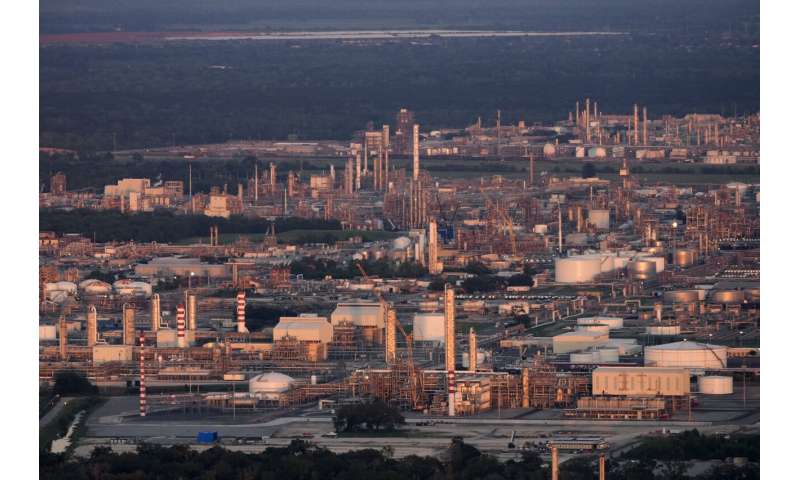
A chemical and petroleum industrial corridor, that is a known source of ethylene oxide emissions, is seen from this aerial photo, in Ascension Parish, La., Friday, June 7, 2024. Credit: AP Photo/Gerald Herbert -

A chemical and petroleum industrial corridor, that is a known source of ethylene oxide emissions, is seen along the Mississippi River from this aerial photo, in Ascension Parish, La., Friday, June 7, 2024. Credit: AP Photo/Gerald Herbert
Tuesday's report is likely to feed into ongoing political and legal battles over the array of chemical plants among small, often predominantly Black communities between Baton Rouge and New Orleans.
Amid such debates, improving measurements of pollutants is important, DeCarlo said, noting there is little high quality measurement around industrial plants, so it's not well understood what residents are actually exposed to.
"We wanted to start to do a better job of assessing what those hazardous air pollutant concentrations look like for communities who live in and around industrial facilities," he said.
___
The text of this story has been corrected to be consistent with its graphic, to reflect that concentrations of ethylene oxide in some areas were measured at as much as 20 times higher than previously estimated, not 10 times higher.
More information: Ethylene Oxide in Southeastern Louisiana's Petrochemical Corridor: High Spatial Resolution Mobile Monitoring during HAP-MAP, Environmental Science & Technology (2024). pubs.acs.org/doi/10.1021/acs.est.3c10579
Journal information: Environmental Science & Technology
© 2024 The Associated Press. All rights reserved. This material may not be published, broadcast, rewritten or redistributed without permission.





















